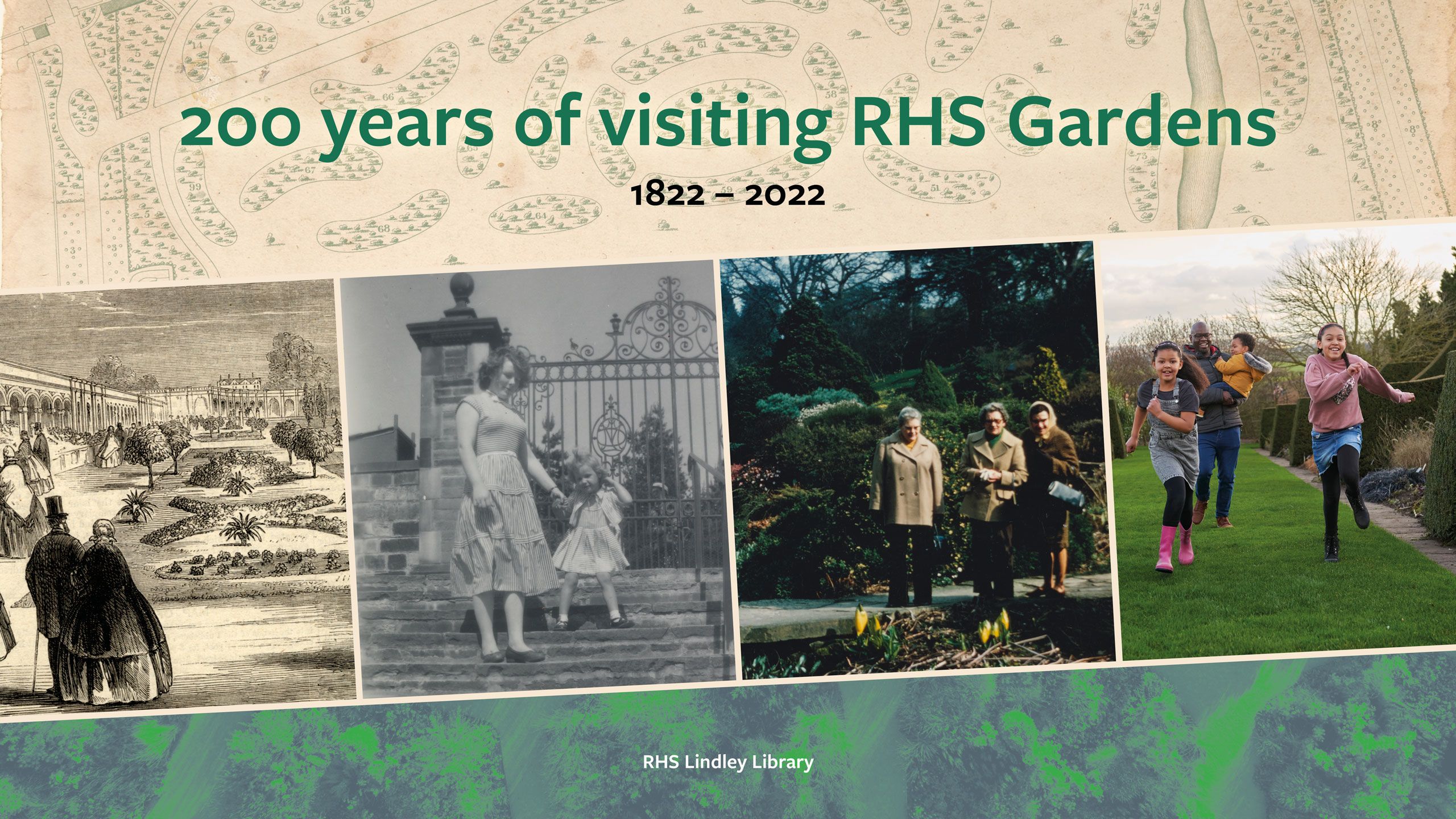
It is hard to imagine the RHS without its gardens.
Today, there are 5 beautiful RHS Gardens across the country. Each RHS Garden is unique, with its own distinct landscapes and plant collections. From flower shows to family events, they continue to inspire visitors in many different ways.
But what was it like to visit the first RHS Garden, which opened 200 years ago? And did you know that RHS Wisley only started admitting members of the public 30 years after it first opened?
Scroll down to uncover the fascinating journey from one modest-sized garden attracting 2,000 people per year in 1822 to 5 major RHS Gardens attracting almost 3,000,000 visitors in 2022.
Welcome to the first RHS Garden
When the RHS opened its first official garden in Chiswick in 1822, it was one of very few public gardens in London. However, that didn’t mean it was easy to get a ticket.
The best way to guarantee entry was to become a Fellow of the Horticultural Society. This did not come cheap, costing the equivalent of £2,500 to join plus an annual fee of £1,600. Until 1830, you also had to be a man.
About ten times smaller than today's RHS Wisley, the garden was open to Fellows between 2pm and 6pm, every day except Sundays. Fellows were allowed to bring in a limited number of guests who had to sign in at the garden gate.
In common with other visitor attractions at the time such as the British Museum, everyone else had to apply for a ticket.
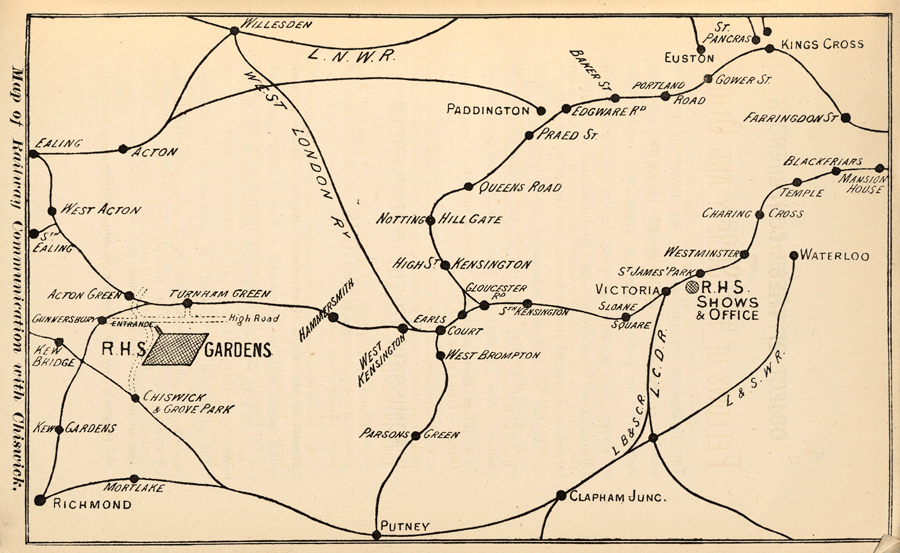
Travel to the Society's first garden was not easy. The district railway line shown in this 1891 map of directions did not reach Chiswick until the 1870s. Credit: RHS Lindley Collections.
Travel to the Society's first garden was not easy. The district railway line shown in this 1891 map of directions did not reach Chiswick until the 1870s. Credit: RHS Lindley Collections.
Welcome to the first RHS Garden
When the RHS opened its first official garden in Chiswick in 1822, it was one of very few public gardens in London. However, that didn’t mean it was easy to get a ticket.
The best way to guarantee entry was to become a Fellow of the Horticultural Society. This did not come cheap, costing the equivalent of £2,500 to join plus an annual fee of £1,600. Until 1830, you also had to be a man.
About ten times smaller than today's RHS Wisley, the garden was open to Fellows between 2pm and 6pm, every day except Sundays. Fellows were allowed to bring in a limited number of guests who had to sign in at the garden gate.
In common with other visitor attractions at the time such as the British Museum, everyone else had to apply for a ticket.

Travel to the Society's first garden was not easy. The district railway line shown in this 1891 map of directions did not reach Chiswick until the 1870s. Credit: RHS Lindley Collections.
Travel to the Society's first garden was not easy. The district railway line shown in this 1891 map of directions did not reach Chiswick until the 1870s. Credit: RHS Lindley Collections.
A tour with a gardening genius
Despite being off the beaten track, news of the Horticultural Society’s exciting experimental garden in Chiswick soon spread.
Visitor numbers doubled from 2,000 in 1822 to 4,000 in 1825. The Society built new entrance lodges, ornamental waiting rooms, and other visitor facilities.
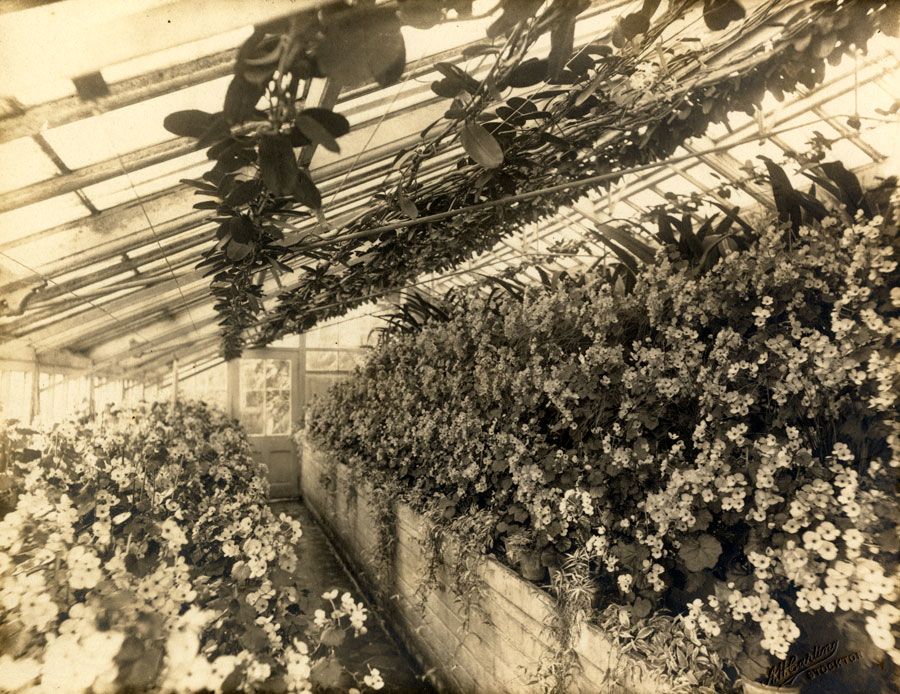
Image: Inside one of the Chiswick Garden conservatories, about 1900. Credit: RHS Lindley Collections.
Image: Inside one of the Chiswick Garden conservatories, about 1900. Credit: RHS Lindley Collections.
Like RHS Wisley today, Chiswick was the site of an ambitious training school for gardeners. All visitors were treated to an exclusive tour of the garden by one of these talented trainee horticulturists.
Some lucky visitors might even have received a tour from a young Joseph Paxton who would go on to design the Crystal Palace, home of the 1851 Great Exhibition.
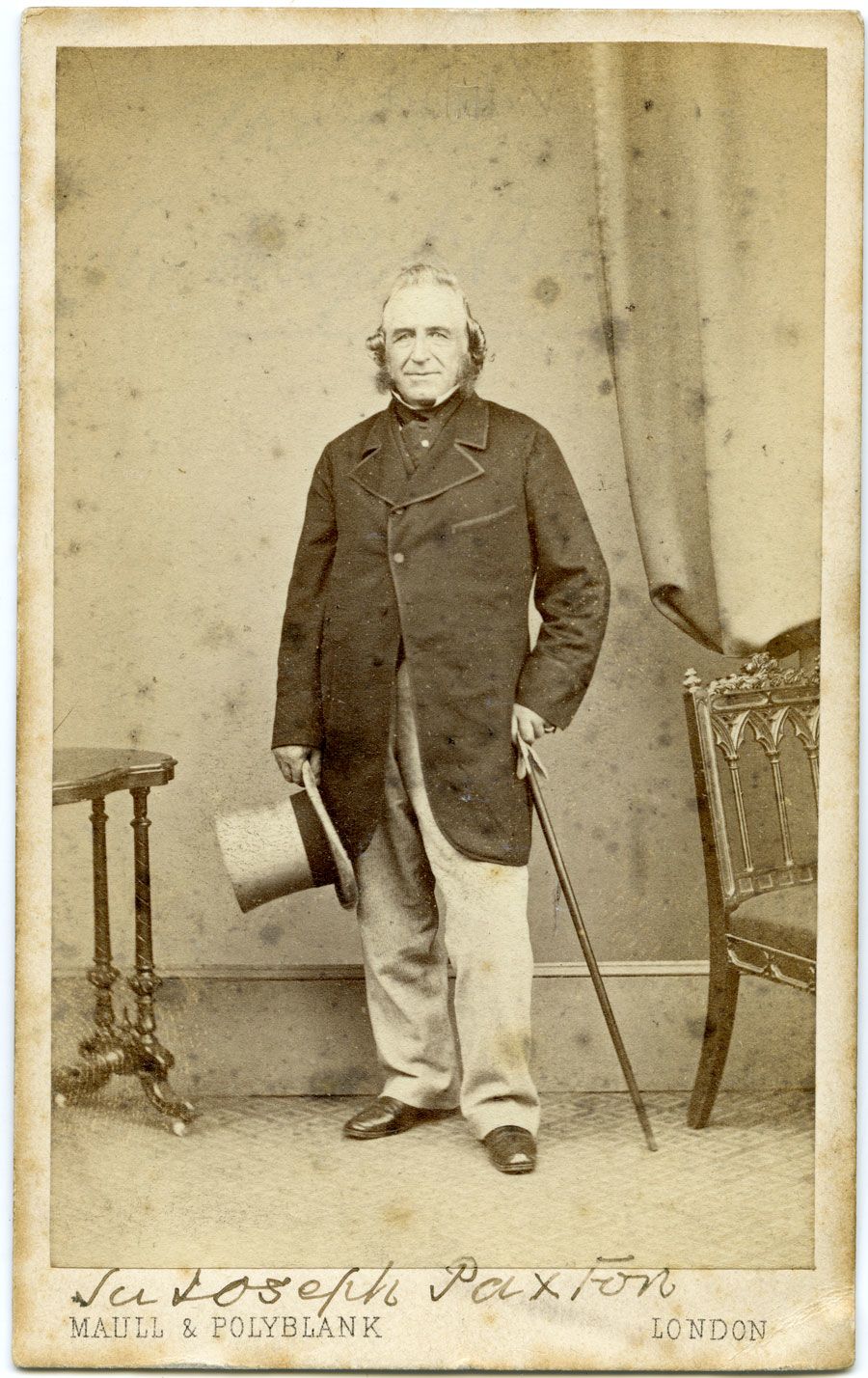
Image: Joseph Paxton was one of a number of ground-breaking horticulturists to train at Chiswick in the early 1820s. Credit: RHS Lindley Collections.
Image: Joseph Paxton was one of a number of ground-breaking horticulturists to train at Chiswick in the early 1820s. Credit: RHS Lindley Collections.
Flower show fundraisers
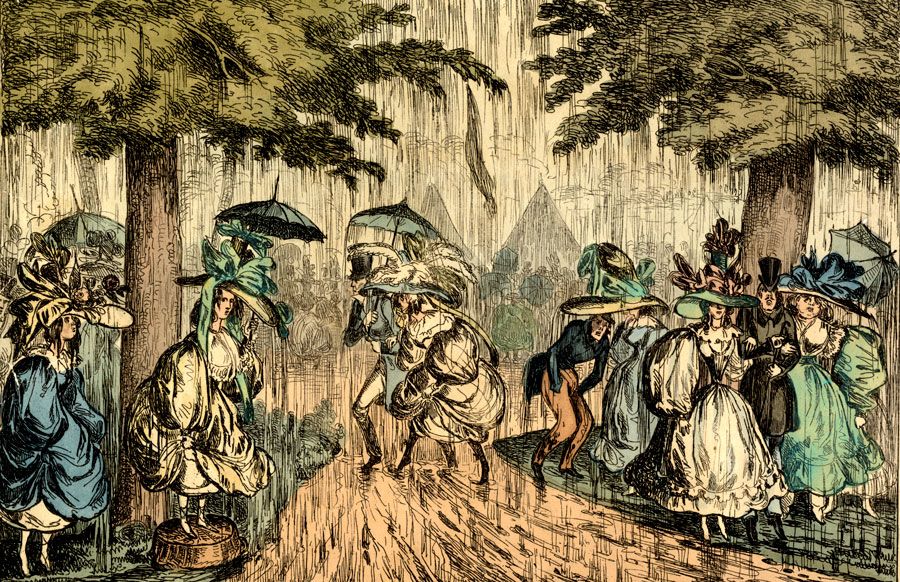
Image: Cartoon of visitors braving the rain at a Horticultural Society fete in Chiswick Gardens, published in 1829. Credit: RHS Lindley Collections.
Image: Cartoon of visitors braving the rain at a Horticultural Society fete in Chiswick Gardens, published in 1829. Credit: RHS Lindley Collections.
Running a garden was an expensive business. Many of Chiswick's earliest visitors were to the flower shows, which helped to pay for the garden's upkeep.
Almost 3,000 people attended the Horticultural Society's first ever flower show in 1827. Tickets cost an eye-watering £800 each in today's money. Wealthy show visitors enjoyed food, music and flower displays in 64 large tents pitched around Chiswick Gardens.
Over the next 20 years, the Chiswick Flower Shows became more popular and a little more democratic, with some cheaper tickets on offer:
"The principal part of the English aristocracy are present at the Show, and mix indiscriminately with the tradesman, the mechanic and the gardener. This scene may be enjoyed by men, women and children for five or six hours at three shillings, sixpence each."
A tour with a gardening genius
Despite being off the beaten track, news of the Horticultural Society’s exciting experimental garden in Chiswick soon spread.
Visitor numbers doubled from 2,000 in 1822 to 4,000 in 1825. The Society built new entrance lodges, ornamental waiting rooms, and other visitor facilities.

Image: Inside one of the Chiswick Garden conservatories, about 1900. Credit: RHS Lindley Collections.
Image: Inside one of the Chiswick Garden conservatories, about 1900. Credit: RHS Lindley Collections.
Like RHS Wisley today, Chiswick was the site of an ambitious training school for gardeners. All visitors were treated to an exclusive tour of the garden by one of these talented trainee horticulturists.
Some lucky visitors might even have received a tour from a young Joseph Paxton who would go on to design the Crystal Palace, home of the 1851 Great Exhibition.

Image: Joseph Paxton was one of a number of ground-breaking horticulturists to train at Chiswick in the early 1820s. Credit: RHS Lindley Collections.
Image: Joseph Paxton was one of a number of ground-breaking horticulturists to train at Chiswick in the early 1820s. Credit: RHS Lindley Collections.
Flower show fundraisers

Image: Cartoon of visitors braving the rain at a Horticultural Society fete in Chiswick Gardens, published in 1829. Credit: RHS Lindley Collections.
Image: Cartoon of visitors braving the rain at a Horticultural Society fete in Chiswick Gardens, published in 1829. Credit: RHS Lindley Collections.
Running a garden was an expensive business. Many of Chiswick's earliest visitors were to the flower shows, which helped to pay for the garden's upkeep.
Almost 3,000 people attended the Horticultural Society's first ever flower show in 1827. Tickets cost an eye-watering £800 each in today's money. Wealthy show visitors enjoyed food, music and flower displays in 64 large tents pitched around Chiswick Gardens.
Over the next 20 years, the Chiswick Flower Shows became more popular and a little more democratic, with some cheaper tickets on offer:
"The principal part of the English aristocracy are present at the Show, and mix indiscriminately with the tradesman, the mechanic and the gardener. This scene may be enjoyed by men, women and children for five or six hours at three shillings, sixpence each."
A new urban garden
By the 1840s, Chiswick Garden was no longer the only show in town. Kew Gardens had opened to the public in 1840 and a host of rival flower shows sprung up through the decade. From the 1850s, these included blockbuster flower shows at the Crystal Palace.
The Horticultural Society decided it needed a more central London garden and show venue:
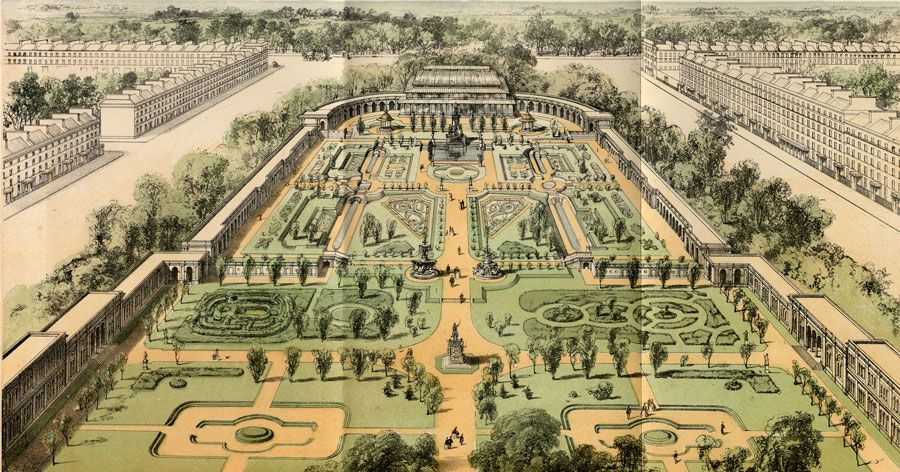
The Horticultural Society's new garden opened in South Kensington in 1861 and was located on the current site of the Science Museum and Imperial College London. Credit: RHS Lindley Collections.
The Horticultural Society's new garden opened in South Kensington in 1861 and was located on the current site of the Science Museum and Imperial College London. Credit: RHS Lindley Collections.
"Dear Albert has taken such immense pains in directing and laying out the garden. The colonnades are beautiful, the beds and parterres when finished will be most charming, so enjoyable for summer and the colonnades practical in damp or wet weather."
Prince Albert had become President of the RHS in 1858 and influenced everything from the garden’s Kensington location to its Italianate architecture and even the events held there.
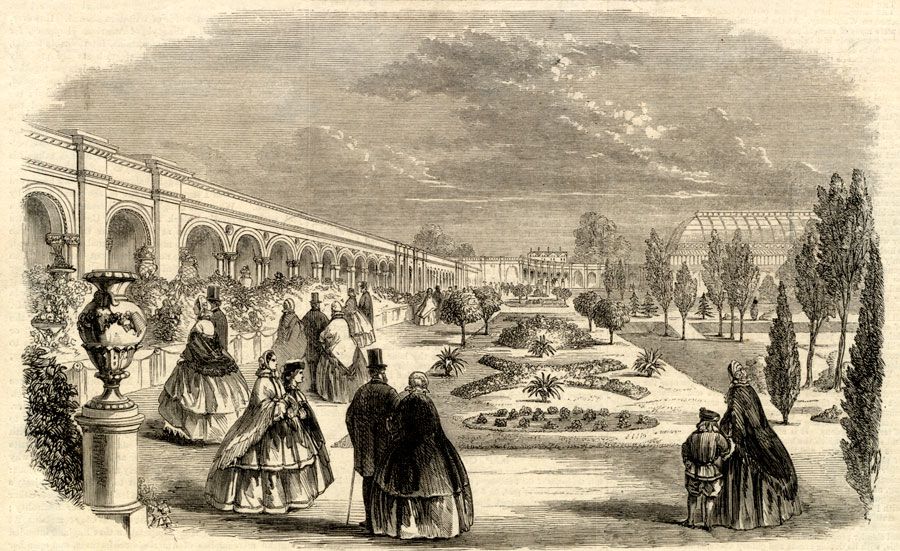
Prince Albert opened the new RHS Gardens at Kensington in his last public appearance on 5 June. The event was widely reported in the contemporary press. Credit: RHS Lindley Collections.
Prince Albert opened the new RHS Gardens at Kensington in his last public appearance on 5 June. The event was widely reported in the contemporary press. Credit: RHS Lindley Collections.
When it opened, visitors were greeted by a garden entirely enclosed by arcades and carpeted with eye-catching gravel patterns. The garden's ostentatious style divided opinion.
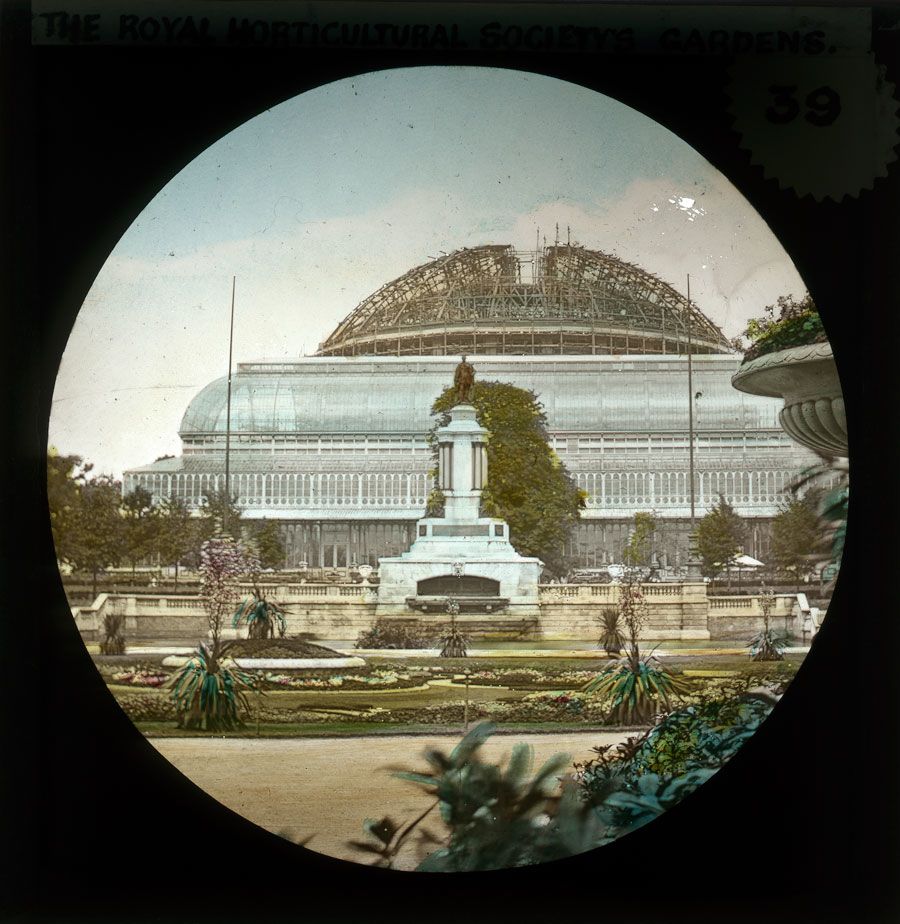
Image: Hand-coloured lantern slide of the RHS Garden at Kensington, about 1869. The partially constructed dome of the Albert Hall, which opened in 1871 can be seen behind the garden's grand conservatory. Credit: RHS Lindley Collections.
Image: Hand-coloured lantern slide of the RHS Garden at Kensington, about 1869. The partially constructed dome of the Albert Hall, which opened in 1871 can be seen behind the garden's grand conservatory. Credit: RHS Lindley Collections.
Prince Albert died soon after the opening of RHS Kensington and, at Queen Victoria's request, a towering statue was placed at the centre of the garden in his memory.
The admission rules for the new RHS Garden did not go down well with RHS Fellows.
The Society had agreed that the garden would be open to all ticketholders to the international exhibitions held in the new South Kensington cultural quarter. Events such as the International Horticulture Exhibition in 1866 received almost 62,000 visitors over 4 days. With rocketing visitor numbers, the garden was often over-crowded.
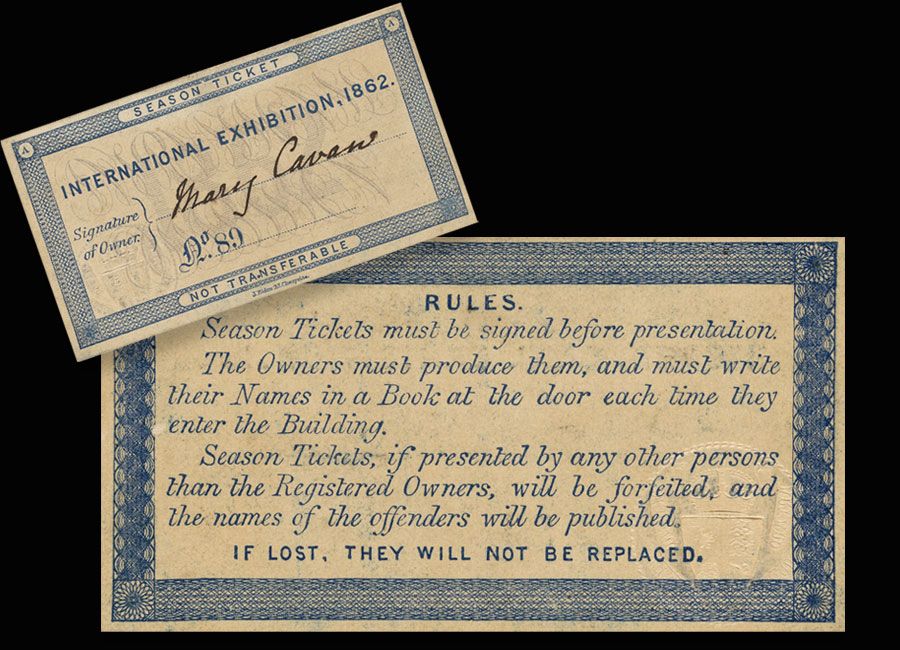
Image: An RHS Fellow season ticket providing entry to the International Exhibition of 1862. Credit: RHS Lindley Collections.
Image: An RHS Fellow season ticket providing entry to the International Exhibition of 1862. Credit: RHS Lindley Collections.
In the end, the Society had to introduce a complicated schedule of Fellows-only days as well as different price bands during the week to discourage the public from visiting at particular times.
With spiralling costs and disagreements about how best to run the site, the RHS closed its Kensington garden in 1888.
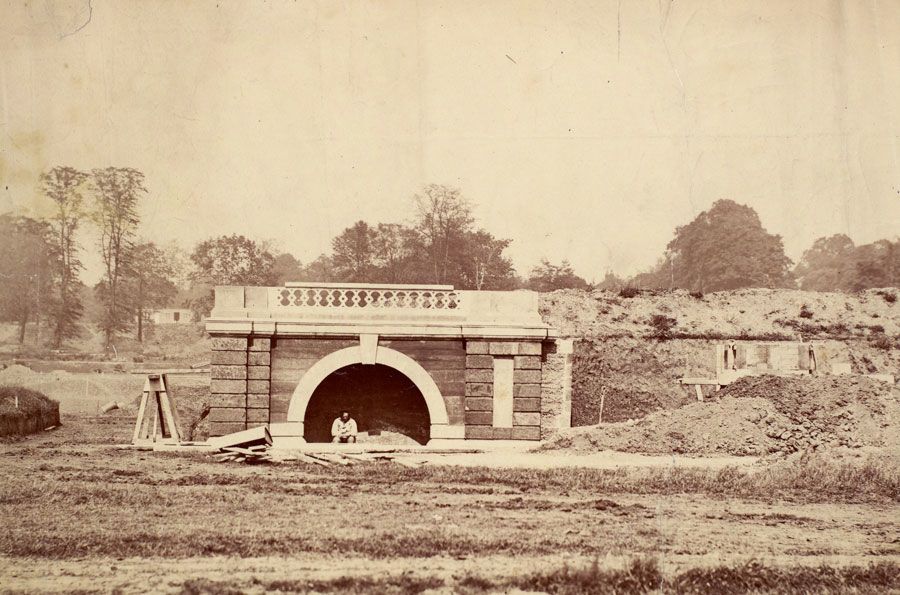
Photograph of RHS Kensington under construction, about 1860. A workman can be seen sitting under one of the arcade arches, which surrounded the garden once it was complete. Credit: RHS Lindley Collections.
Photograph of RHS Kensington under construction, about 1860. A workman can be seen sitting under one of the arcade arches, which surrounded the garden once it was complete. Credit: RHS Lindley Collections.
“A garden to which Fellows may come to solve their individual gardening problems”
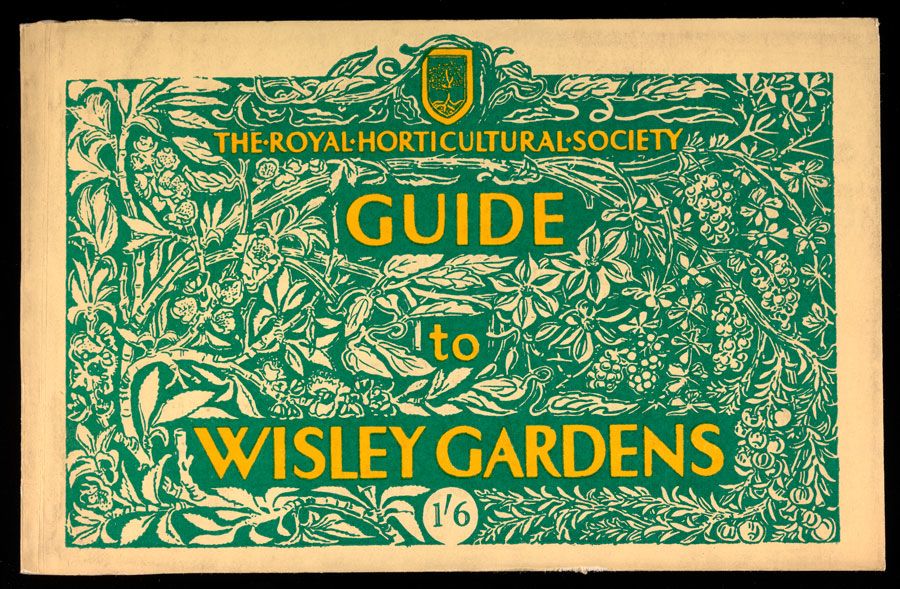
Today, RHS Wisley is one of the UK's best-loved gardens and attracts over one million visitors per year. It is hard to believe that the flagship garden of the RHS only started admitting members of the public 30 years after it first opened.
When the RHS decided that it needed a new garden away from the pollution of the London suburbs, Wisley and its beautiful Surrey surroundings seemed the perfect solution.
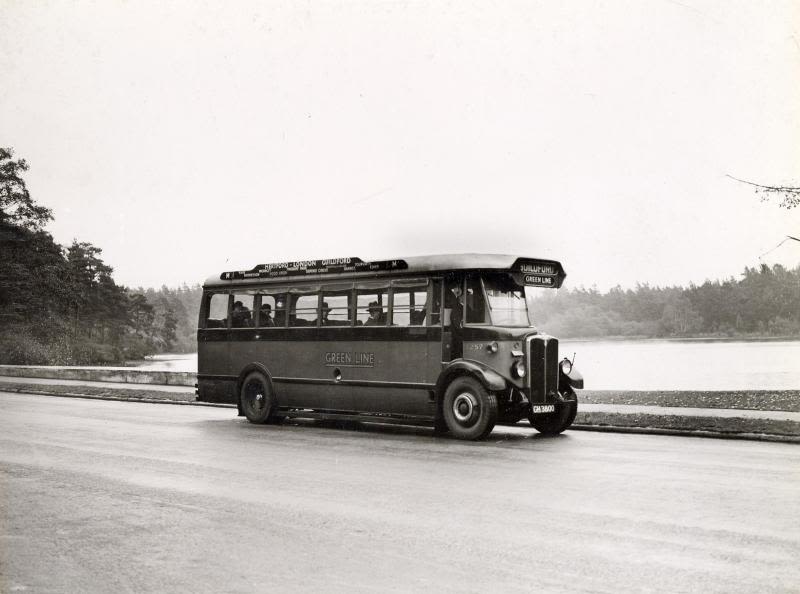
Image: In Wisley's early years, there were worries that it was a little too remote. By the time that it opened to the public, visitors could catch the Green Line bus from London to Wisley (pictured in 1934). © TfL from the London Transport Museum collection
Image: In Wisley's early years, there were worries that it was a little too remote. By the time that it opened to the public, visitors could catch the Green Line bus from London to Wisley (pictured in 1934). © TfL from the London Transport Museum collection
However, when the new garden opened in 1904, the focus was less on visitors and more on creating an exceptional experimental garden for Fellows and a leading horticultural training school. A year on, the new RHS Garden welcomed a modest 5,250 visitors.
By the late 1920s, visitor numbers had climbed to an impressive 50,000 even though the garden was still only open to Fellows and their guests. In 1934, RHS Wisley finally opened its gates to the general public and it never looked back.
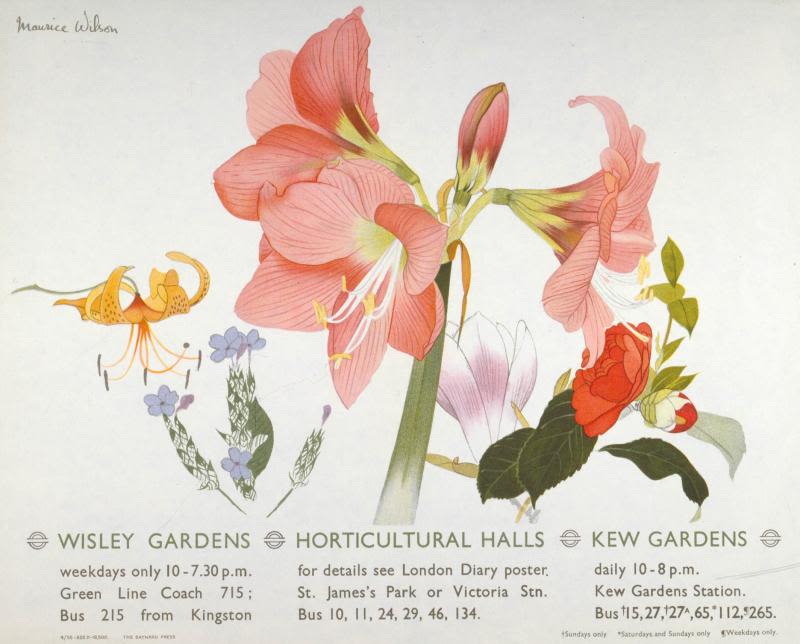
Image: A 1955 Transport for London poster advertising travel to Wisley alongside the Horticultural Halls and Kew Gardens. Designed by Maurice Wilson. Credit: © TfL from the London Transport Museum collection
Image: A 1955 Transport for London poster advertising travel to Wisley alongside the Horticultural Halls and Kew Gardens. Designed by Maurice Wilson. Credit: © TfL from the London Transport Museum collection
“Big shops out of little kiosks can grow”
Meet Peggy Groom – one of many RHS employees who helped to transform Wisley into a welcoming visitor destination.
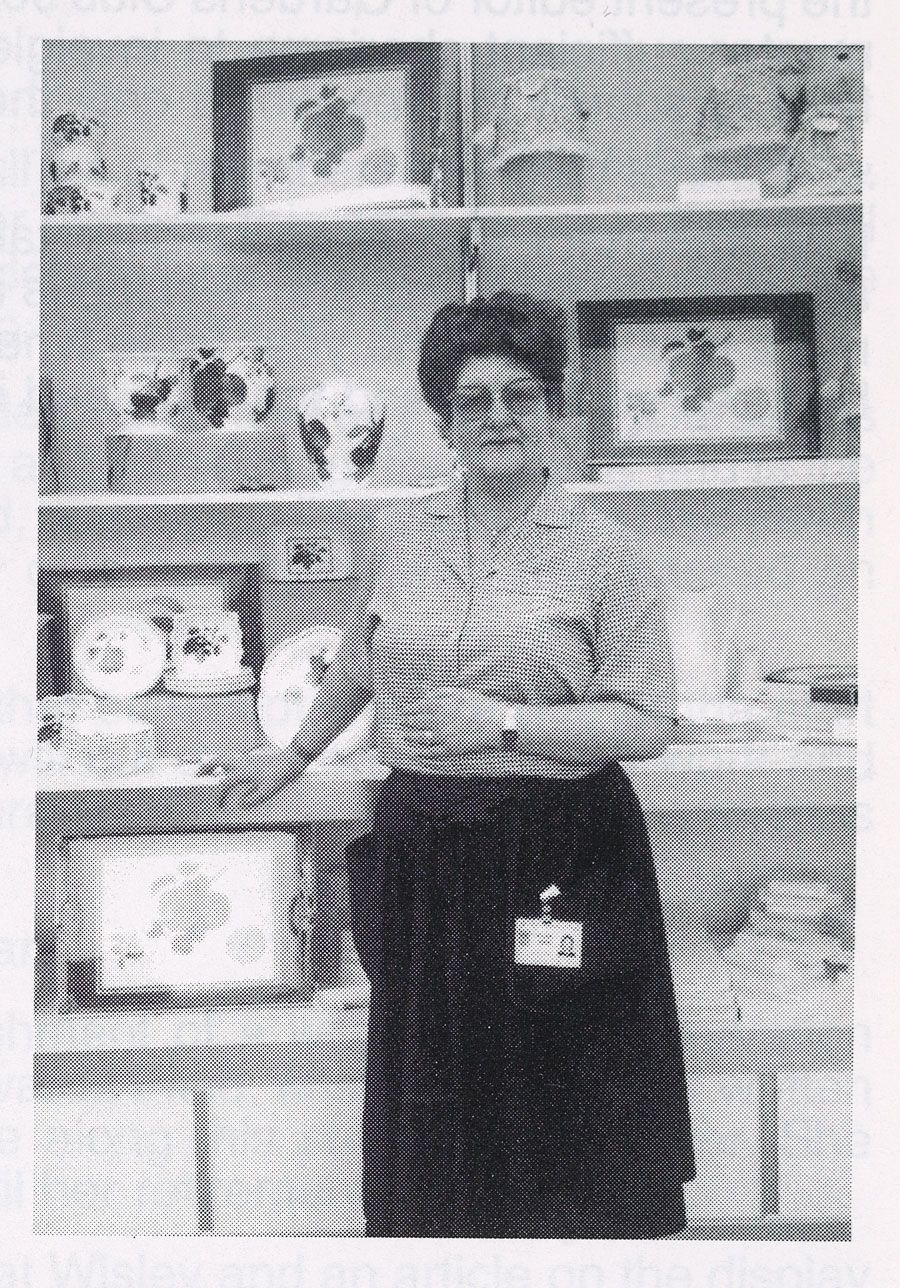
As a child, Peggy lived with her parents in a flat in Wisley's Old Laboratory. Her father was the garden caretaker while her mother ran a small kiosk at the garden entrance selling RHS booklets and postcards. Peggy helped out during the holidays and took over the kiosk when her father died.
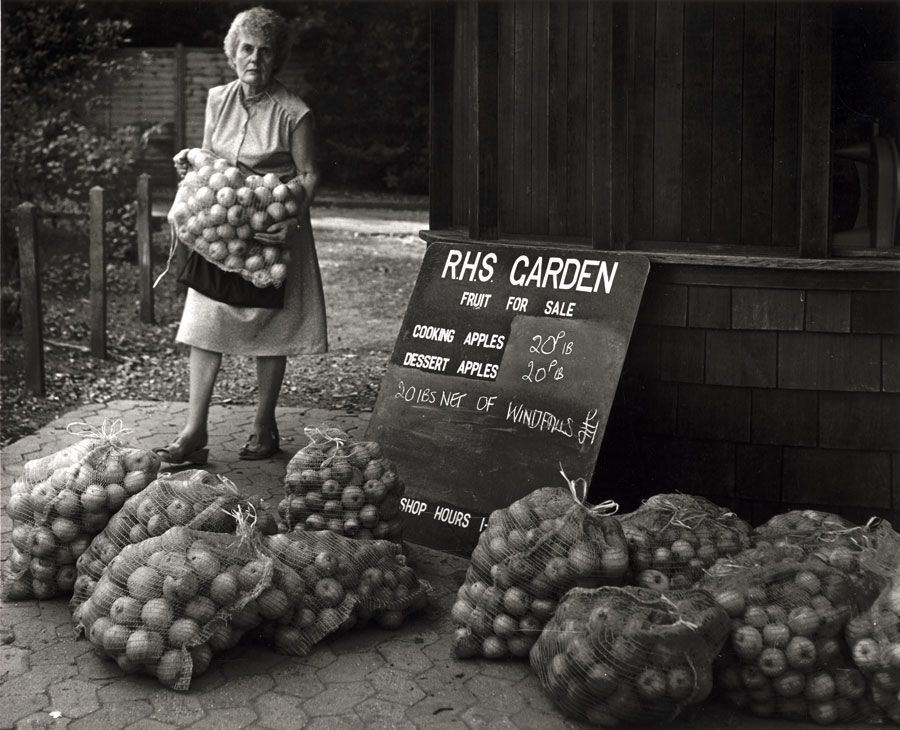
Image: There were two sales kiosks at Wisley in the 1950s-70s. This photograph shows RHS employee, Betty Knight, selling apples in 1955 at the second kiosk, which was located at the other end of the garden to Peggy's entrance gate kiosk. Credit: RHS Lindley Collections.
Image: There were two sales kiosks at Wisley in the 1950s-70s. This photograph shows RHS employee, Betty Knight, selling apples in 1955 at the second kiosk, which was located at the other end of the garden to Peggy's entrance gate kiosk. Credit: RHS Lindley Collections.
With Peggy at the helm, the kiosk went from strength to strength. She expanded its product range to include china and corn dollies, which sold so well that the kiosk had to be replaced, first by a larger kiosk and then by a gift shop and information centre in 1975.

Image: Photograph of the old entrance to RHS Wisley showing the gate house to the right and Peggy's kiosk to the left. The old oak is still standing and is more than 250 years old. Credit: RHS Lindley Collections.
Image: Photograph of the old entrance to RHS Wisley showing the gate house to the right and Peggy's kiosk to the left. The old oak is still standing and is more than 250 years old. Credit: RHS Lindley Collections.
There were no toilets in the gift shop and, in Peggy’s words: “an ability to sprint was an advantage!”
The new shop was soon outgrown and, in 1979, it was replaced by a much larger garden centre, this time with staff (and visitor!) toilets.
In just 20 years, Wisley visitor numbers had more than doubled from 150,000 in 1957 to 400,000 in 1978.
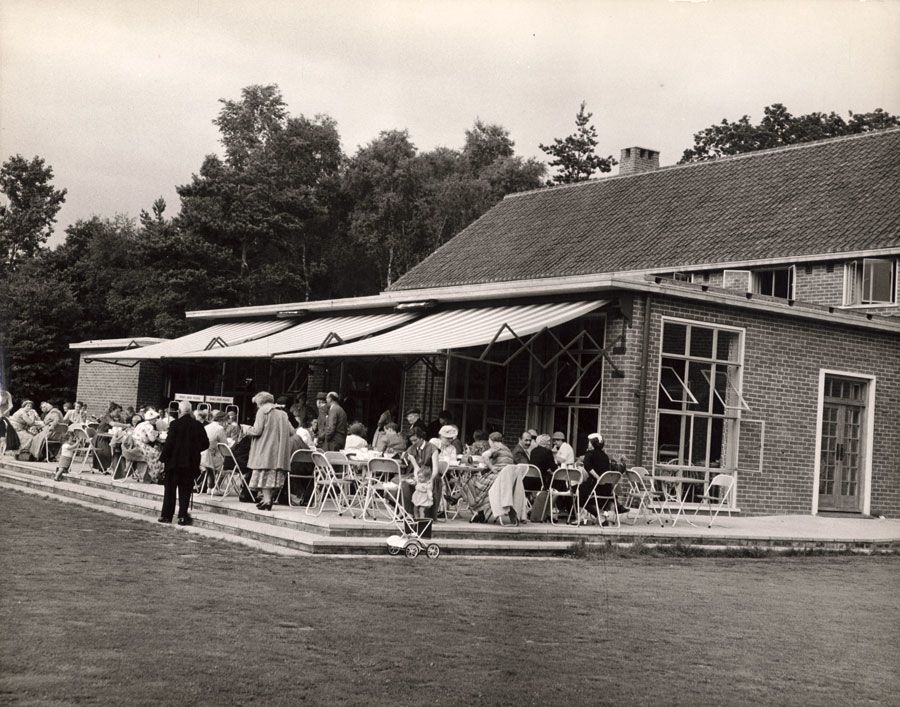
Image: The RHS had already started expanding Wisley's visitor facilities in the 1950s. This photograph shows the new Aberconway House restaurant shortly after it opened in 1954. Credit: Keystone Press Agency Ltd / RHS Lindley Collections
Image: The RHS had already started expanding Wisley's visitor facilities in the 1950s. This photograph shows the new Aberconway House restaurant shortly after it opened in 1954. Credit: Keystone Press Agency Ltd / RHS Lindley Collections
“Finding peace in the garden”
Over the past 30 years, the creation of RHS Gardens in different parts of the country has been an important way of reaching new visitors and new communities.
RHS Rosemoor in Devon opened in 1990, followed by RHS Hyde Hall in Essex in 1993. In 2001, the RHS merged with the Northern Horticultural Society and acquired Harlow Carr gardens near Harrogate. Finally, in 2021, after 3 years of restoration work and the planting of 260,000 new plants, RHS Bridgewater opened on the site of New Worsley Hall in Greater Manchester.
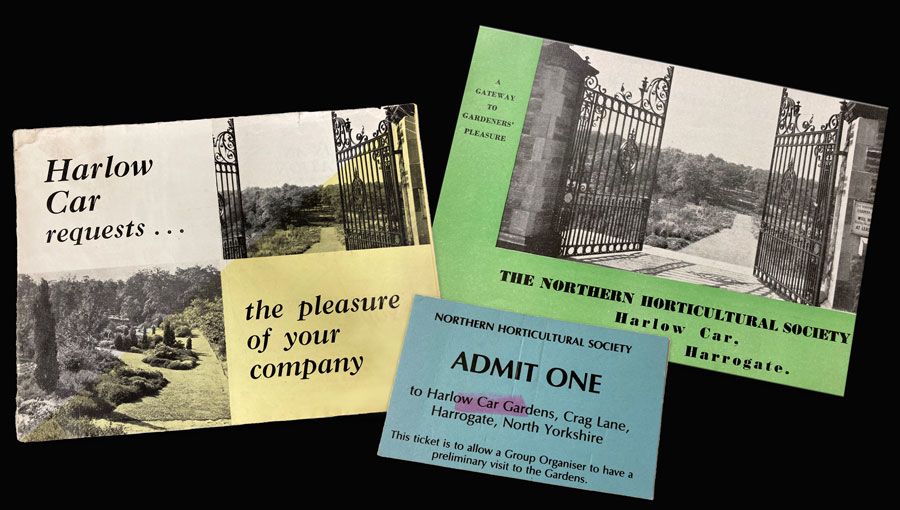
Image: Early 1950s guidebooks for the Northern Horticultural Society's Harlow Car gardens (the extra 'r' was added later on), which became RHS Harlow Carr in 2001. Credit: RHS Lindley Collections.
Image: Early 1950s guidebooks for the Northern Horticultural Society's Harlow Car gardens (the extra 'r' was added later on), which became RHS Harlow Carr in 2001. Credit: RHS Lindley Collections.
Alongside RHS staff, a dedicated body of volunteers play an important role in making all five RHS Gardens so memorable for their visitors. They often stay on for many years, forming a strong bond with the garden and fellow volunteers.
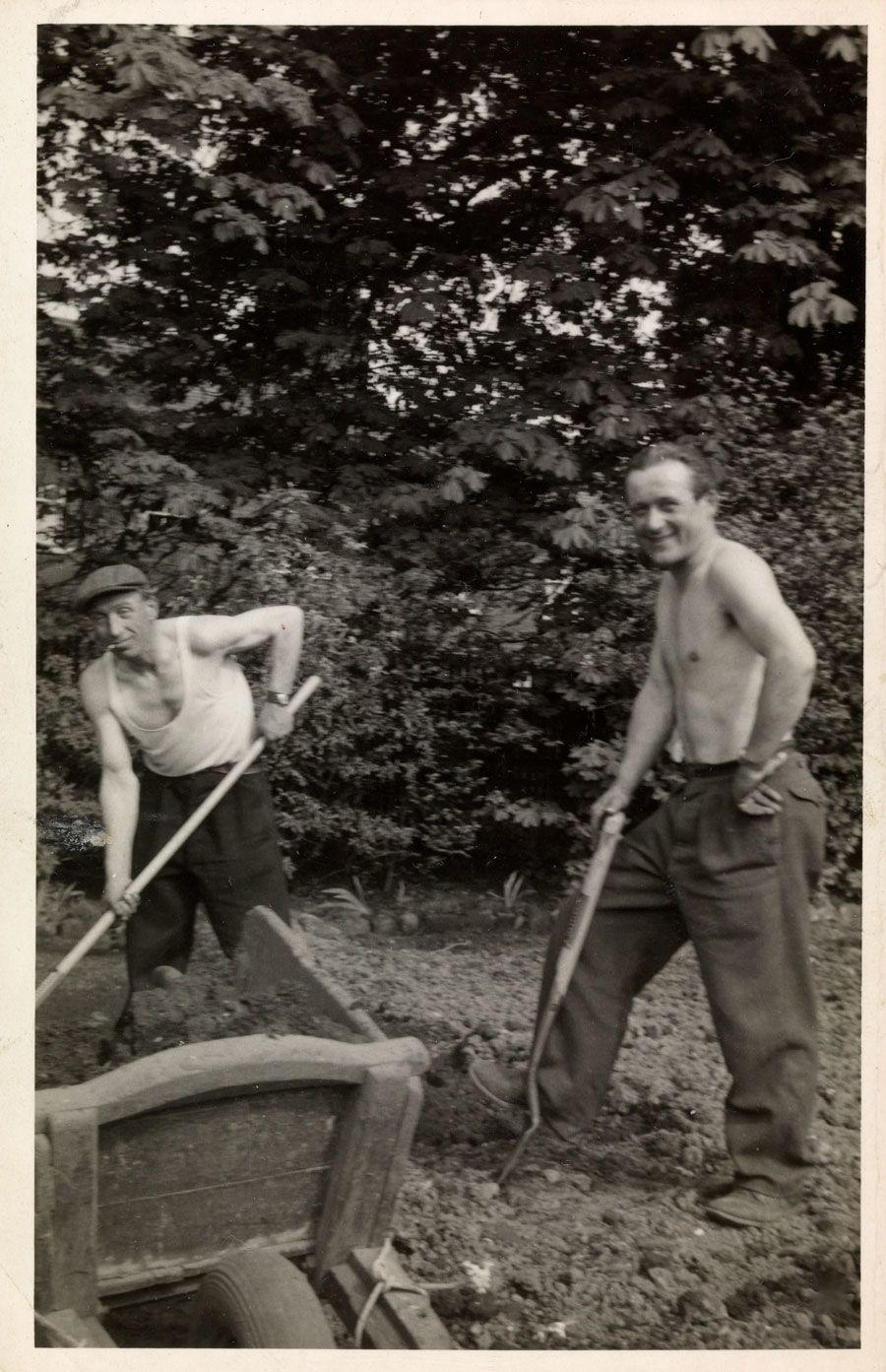
Image: Vasily (Basil) Petruszcak and Jan (Johnnie) Ulman digging at Harlow Carr soon after they started volunteering in the early 1950s. Credit: RHS Lindley Collections.
Image: Vasily (Basil) Petruszcak and Jan (Johnnie) Ulman digging at Harlow Carr soon after they started volunteering in the early 1950s. Credit: RHS Lindley Collections.
At Harlow Carr, two Ukrainian volunteers made a particular mark on the early history of the Garden. Vasily (known as Basil) Petruszcak and Jan (known as Johnnie) Ulman had become friends during the Second World War after they were captured and imprisoned together in a German POW camp. After the War, Basil and Johnnie moved to the UK and became next-door neighbours in Harrogate, where they started volunteering for the Northern Horticultural Society in 1951.
Over many years, they helped to transform “70 acres of rough meadow and unkempt, overgrown woodland” into the beautiful gardens, which later became RHS Harlow Carr. Basil continued volunteering until well into the 1990s.
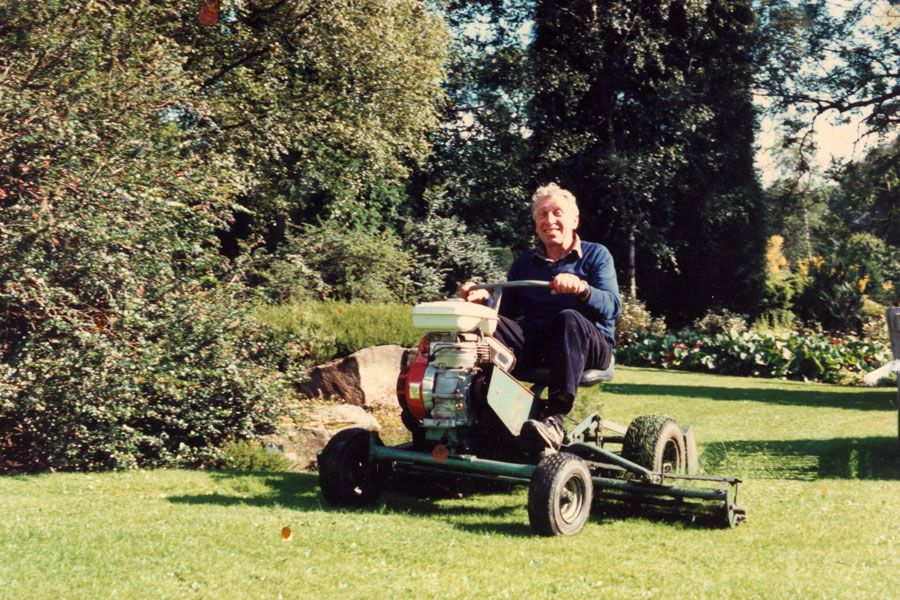
Image: Basil Petruszcak on a ride-on-mower at Harlow Carr, in 1990 almost 40 years after he had first started volunteering at the garden. Credit: RHS Lindley Collections.
Image: Basil Petruszcak on a ride-on-mower at Harlow Carr, in 1990 almost 40 years after he had first started volunteering at the garden. Credit: RHS Lindley Collections.
Today's RHS volunteers continue in the spirit of Basil and Johnnie, working tirelessly to keep the Gardens as beautiful and as welcoming as possible. Because the RHS wouldn't be the RHS without its Gardens – or indeed its visitors.
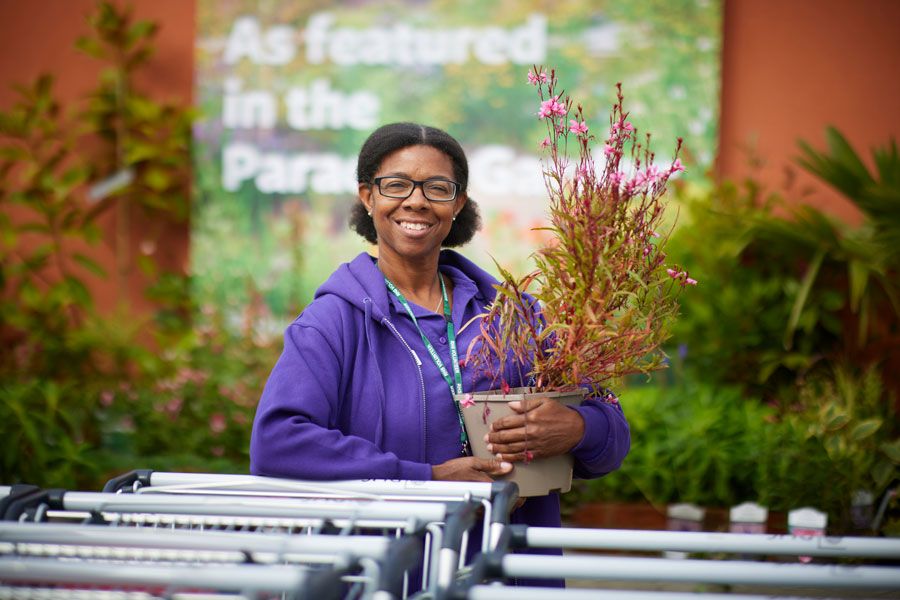
Image: Volunteer, Sharon Hill at RHS Bridgewater, 2021. Credit: RHS / Mark Waugh.
Image: Volunteer, Sharon Hill at RHS Bridgewater, 2021. Credit: RHS / Mark Waugh.
“Coming to Bridgewater was like walking through a dream... It was like bliss, everyone was so friendly and it’s such a beautiful place. It’s a happy place to be, beautiful surroundings – it’s inspiring.”
Today's RHS Gardens are full of surprises...
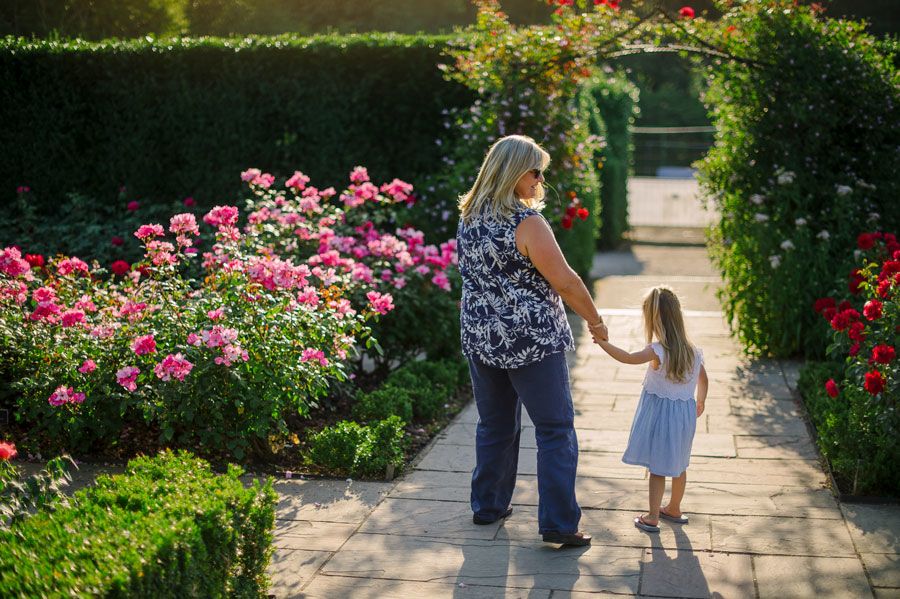
Countless roses at RHS Rosemoor
We don’t actually count, but we probably grow well over 50,000 roses as we have over 2,000 rose plants, with on average 20 to 30 flowers on each!
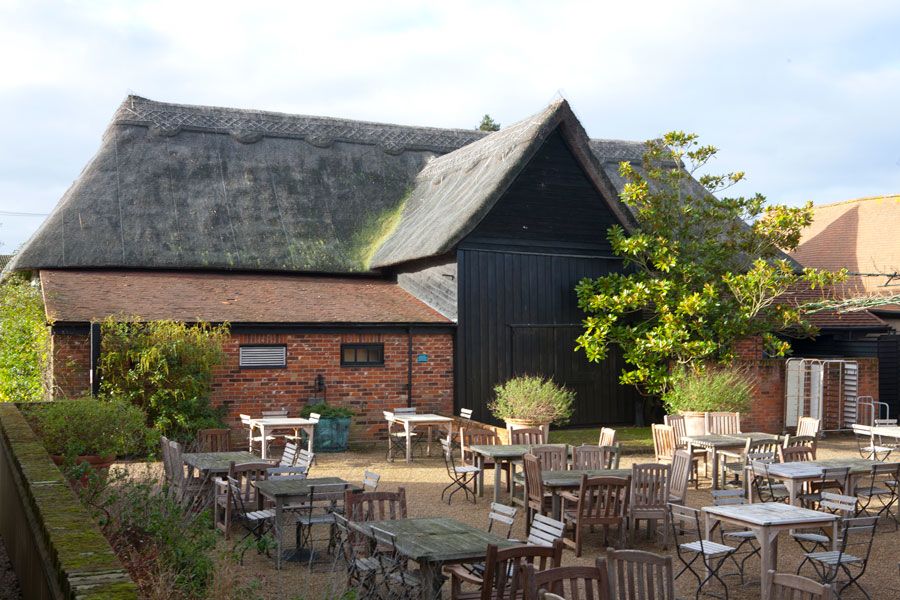
An ancient café at RHS Hyde Hall
The Thatched Barn tea room dates back over 300 years when it was used as a grain barn. In 2021, Hyde Hall's cafés sold an impressive 215,996 hot drinks, and served nearly 313,000 customers.
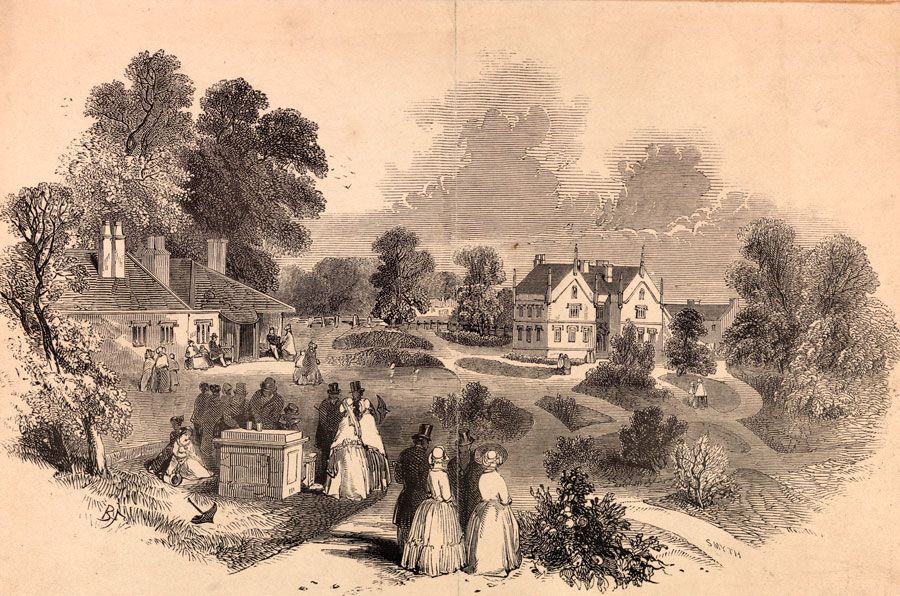
A Victorian spa at RHS Harlow Carr
Harlow Carr was the site of a popular spa in the mid 19th century. The spa's original public house, the Harrogate Arms is still standing and is currently being restored by the RHS.
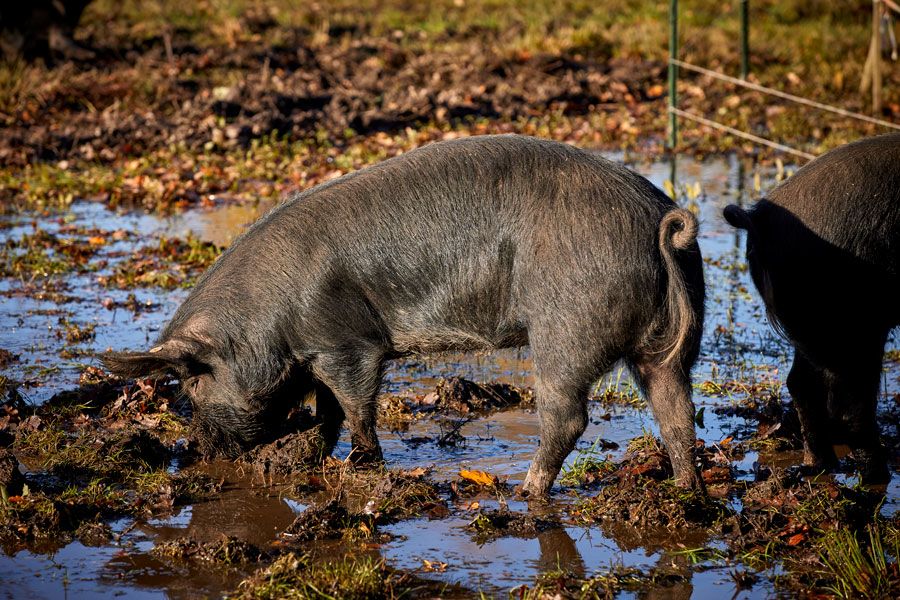
The power of pigs at RHS Bridgewater
There are 6 rare breed Berkshire pigs at Bridgewater who have been 'working' on site for the past 3 years clearing ground. You can say hello to them when you visit!
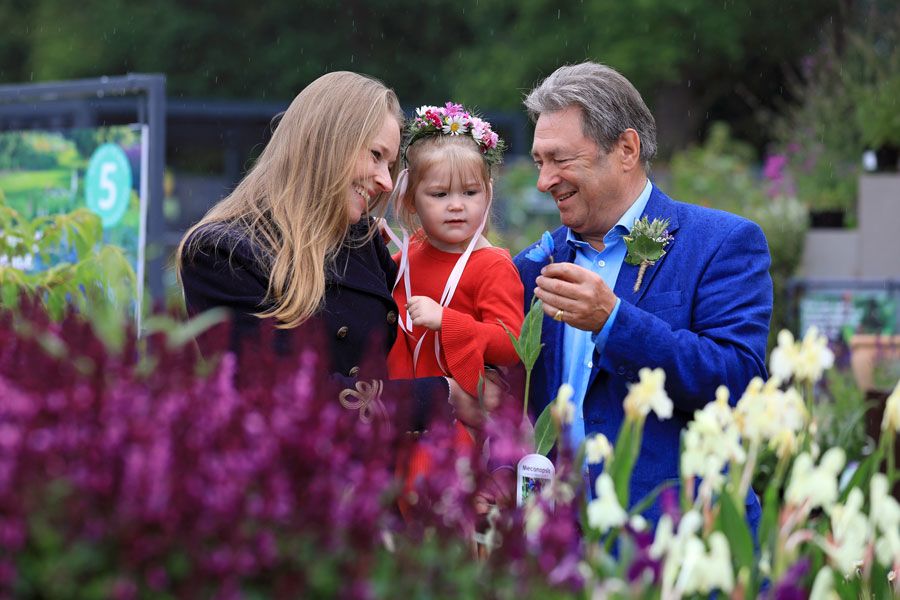
RHS Wisley's youngest ever visitor
In 2016, a visitor gave birth while visiting Wisley! Baby Rosie was delivered in an office in the Old Laboratory. A tree was planted in her honour and is known as Rosie's Tree. Rosie was given life membership of the RHS.
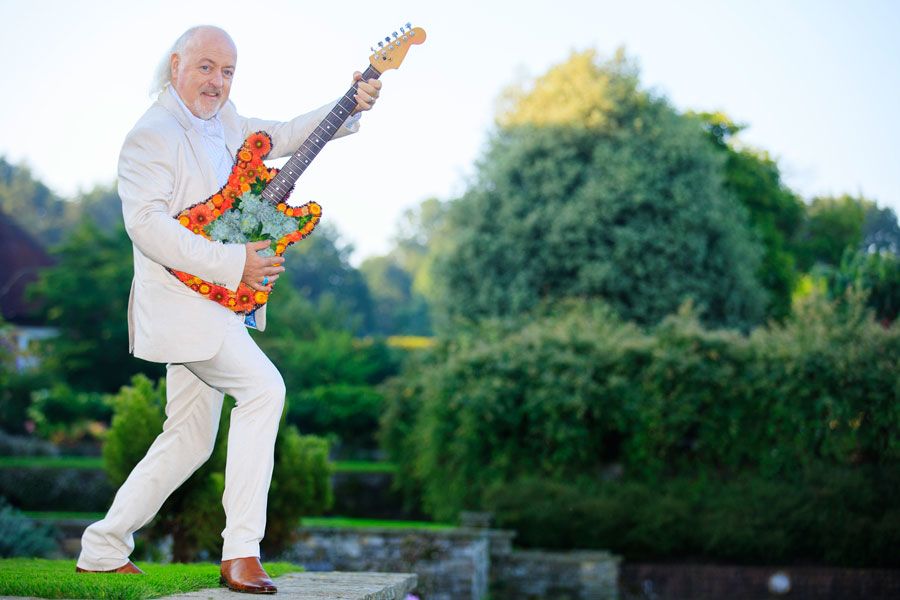
A bumper year for garden visits
In 2021, an amazing 2,800,000 people visited at least one of the five RHS Gardens.
The RHS now has over 600,000 members.

